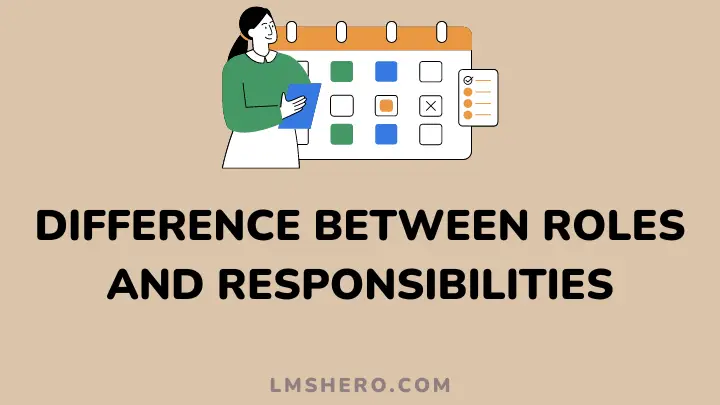Despite the positive strides of online learning, a teething problem has been how to increase students’ online course engagement.
Many students start with a burning desire and euphoria to learn. Over time, they lose focus and motivation to continue or make themselves available for classes.
As a result, many individuals and parents question the effectiveness of online learning. To this end, online educators must seek transformative solutions that can increase students’ engagement, participation, and satisfaction in their online courses.
In this article, you’ll discover ways by which you can improve the online learning experience and increase online course engagement through hands-on strategies.
1. Make An Introductory Video
Online courses do not avail students of the opportunity of face-to-face or physical interaction that comes with traditional classroom learning. As such, they may find it difficult to adjust to online courses.
To do this, you should start with a brief introduction of yourself, the learning management system you’re using, and the objectives of the course.
Furthermore, you should orient students about how to go about learning the course. Tell them the best approach to learning the course online, how they can structure their learning plan and manage time effectively.
This way you are showing that you are not only making the course to make money but to make an impact. You can further show them how to navigate the LMS and the features of each icon.
Additionally, you should show learners how to access the course materials and the online community or forum.
2. Use Frequent Assessments and Gamification Tools
Rather than waiting till the end of the lesson before conducting any test or assessments, make sure you assess students after completing each module in the online course.
By assessing the students from time to time, you can sustain their attention just like in a face-to-face class. Through assessments, students can know where they stand in the learning process.
In addition, you can gamify the online learning experience by using badges, certificates, or leadership boards. These are excellent ways to motivate students to exact more energy into learning because it serves as a form of reward that they can show off for their efforts.
3. Present An Organized Variety of Learning Materials
Naturally, it can be so frustrating trying to navigate a complex tool. The same can be said for online courses.
If students cannot easily find the learning materials and content, it can make them frustrated and lose interest. Therefore, it is important that all the contents are organized.
One way to do this is to list the learning materials just below each course module. This way students do not have to distract themselves or disrupt the learning process when looking for materials to aid their learning.
Furthermore, you should employ a vast content format. So you can provide, slides, ebooks, and if possible audio files for students to access. This way you cater to all types of learners and everyone can choose to learn how in their own way.
4. Create A Short Introduction For Each Module
Before starting each module, give a brief introduction to what that aspect of the course is about. The introduction should entail the objectives of the lesson. The objectives of a lesson state what the student must have learned after the module.
Furthermore, you should remind students of what they stand to gain if they complete the course. This will help students internalize the goal of taking the online course. Also, it can make them more focused.
5. Be More Present As The Instructor
In-person learning has the instructor or teacher present physically for the students to see and interact with. This person-feel is possible with online courses too.
Therefore, you should show yourself from time to time in the video rather than adding only your voice to the graphical content.
This way students can feel like they are right where they are. They are able to see you gesticulate and observe your facial expressions as you teach. Also, it creates a one-on-one interactive feeling.
5. Reach Out To Students Via Email
One of the best ways to improve engagement with students is to reach out to them via email before the course, in the middle of the course, and after completing the course.
Through this, you can be more personal with them. You can also encourage them to reach out to you via email if they encounter any problems.
In addition, if a student does not show up again to continue from where they stopped, you should reach out to them and encourage them to continue from where they stopped.
6. Build A Learning Forum Or Community
We all enjoy the feeling of belonging to a group of people who share the same thought and ideas with us. As such, creating a community or forum where learners can interact fosters an online learning experience.
As a matter of fact, it is regarded as one of the best ways to drive engagement because, in an actual sense, engagement is all about interaction. Therefore, through these forums, students get to interact with each other.
Furthermore, instructors can engage students also by bringing up relevant topics for discussion. This way learners can debate, discuss and share ideas. In the end, students can easily retain and understand the online course.
7. Deliver Learnings In Bit
Instead of ramming up contents into a module, break it down into bit-sizes. This is because the human attention span is short and it begins to diminish after ten minutes.
So, to help students learn better, make each section less than ten minutes. This way, you give learners time to recall what they have learned.
8. Create An Avenue For Application
To increase online course engagement, you should create opportunities for students to apply what they learn immediately.
You can do this by:
- Painting a real-life situation so students can proffer solutions to it
- Asking open-ended questions
- Encouraging group assignments in the online forum
- Raising controversial topics for discussion
- Asking questions
Through all these learners can easily retain lessons. Also, open-ended questions, help learners to think critically, thereby, building their capacity to be creative.
9. Provide Frequent And Timely Feedback
Providing students with frequent and timely feedback helps them to know their progress rate as they learn. It is also a way to interact with them as an instructor.
Hence, you should help them with quick feedback on assignments, tests, group discussions, and emails. Providing quick feedback on assignments and tests helps them for further study since they can identify their mistakes and learn from them.
Furthermore, your feedback should also advise them on which part of the online course they should go back to so as to learn more or understand better.
Moreso, your feedback should be detailed and constructive, and not scanty.
10. Employ a play-based method
Learning has to be serious but at the same time, it shouldn’t be boring. Using play-based learning styles like telling a story, and sharing an adventure to explain concepts is an inspiring way to drive learners’ engagement.
Stories are a great way to hold and grab learners’ attention. Instead of the conventional approach of direct teaching, you can share a story with students, and relate it to the subject matter under study.
You may also try giving assessments in a story-like manner. This way learning seems fun, less burdensome, and more engaging.
11. Do A Preview At The End Of The Course
A preview is like a summary of the whole course content. It is important to help students remember what they have learned from the beginning of the course.
Also, it is an opportunity to communicate the objectives of the course once again and ask students to assess themselves to know if they actually learned.
Moreso, you can do a preview for every module or section of the course if you can as this will help improve retention ability.
Benefits Of Students Engagement In Online Courses
1. Better retention
When students are more engaged in the course, they would not have to struggle to retain or remember what they learn.
In addition, frequent assessments, tests, and feedback help students remember the content of the course.
2. Improved academic performance
With better engagement comes increased retention. The end result of increased retention, therefore, is better academic performance.
3. Increases learning speed
Strong engagement while taking an online course can help students increase their pace or time of learning. Furthermore, instructors can help students understand better through discussions in the online community.
4. Makes learning easy and fun
Learning is more effective when it is fun. And the most effective way to make learning easy and fun are through engagement.
Also, using stories and gamification features can make learning more enjoyable for students.
FAQs
Why is student engagement important in online learning?
Students’ engagement is important in online learning in order for them to understand the content of the course and retain it easily. Without learners’ engagement, the objectives of the course content cannot be achieved.
Why should online learning be engaging?
Online learning should be engaging so as to increase students’ attention span and ability to complete the course.
Are physical classes more engaging than online courses?
Yes. Physical classes are more engaging because students have physical and direct interaction with instructors and other learners.
In contrast, online courses are pre-recorded, students do not see the teacher or instructor physically, and there is no real-time interaction.
Conclusion
Learning how to increase student online course engagement is important. Therefore, online course creators and instructors have to employ a host of tools and strategies to drive student engagement.
Secondly, it is important so as to increase the chances of having students spread the word about the effectiveness of your course. Thereby, helping you to make more money.
Thirdly, you should choose an LMS that provides interactive video elements as this is key to driving engagement.
Finally, you can read the article on how to increase online course sales so as to make more money on your course.
I hope this article helps you to drive more engagement for your online course.
Thanks for reading.







